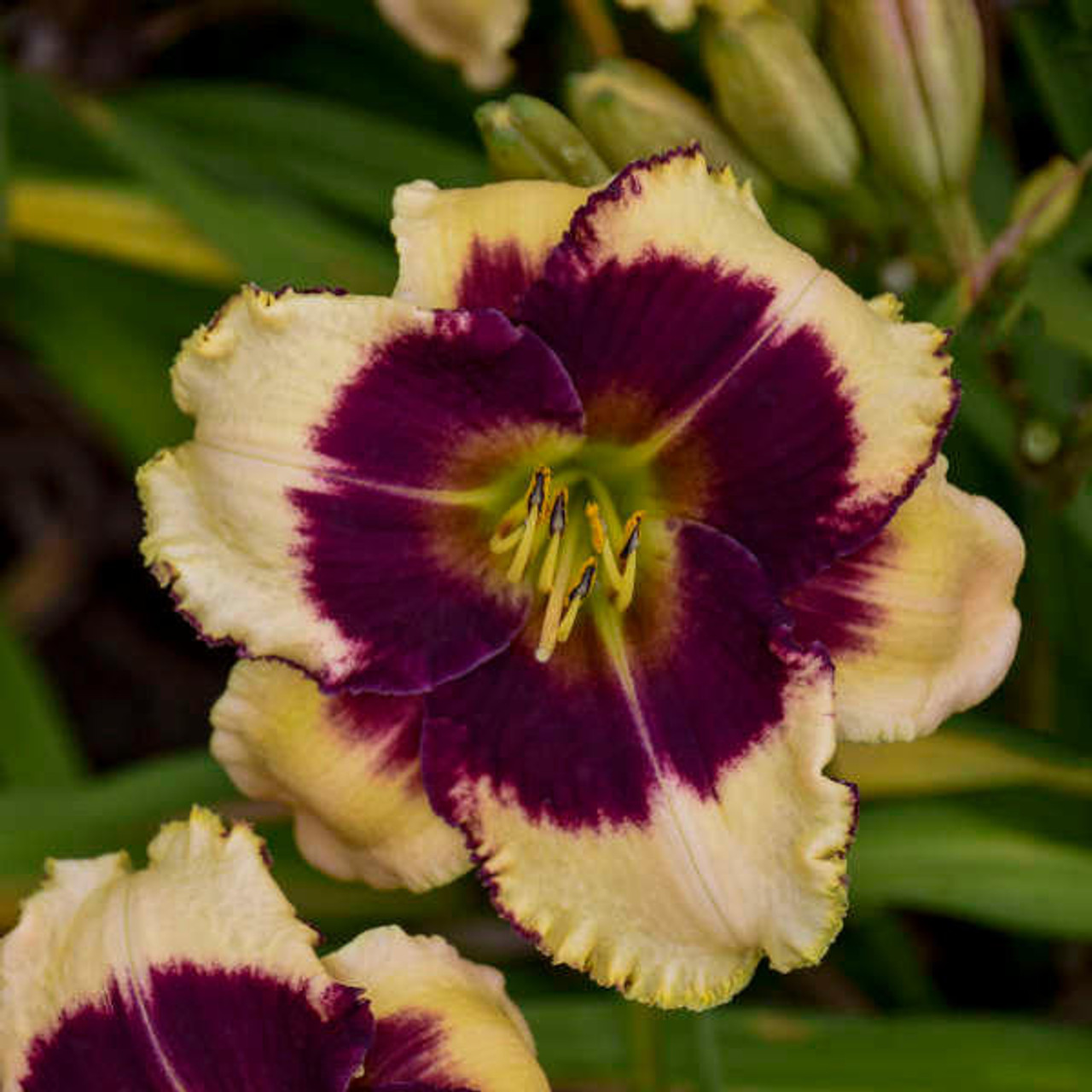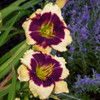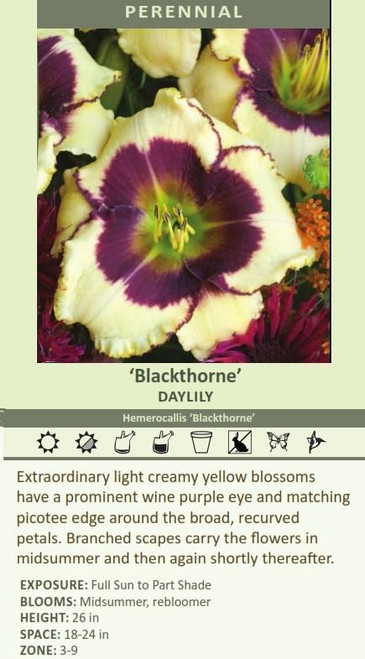Product Description
Hemerocallis 'Blackthorne' (Trimmer, 1996) (25) Bare Root Plants
Common Name: Daylily
Very light creamy yellow blossoms with a hint of peach display a prominent wine purple eye and matching picotee edge half way up the attractively ruffled petals. The broad, rounded, recurved petals, glowing chartreuse throat, and diamond dusting make this flower even more beautiful.
Branched stems carry the 4½-5" blossoms first in midsummer and then again shortly after the first round of bloom (though it is not officially registered as a rebloomer).
- Early Midseason Bloomer, blooming in early July.
- Rebloomer, producing a second set of flowers.
- Semi-Evergreen foliage.
- Tetraploid with 44 chromosomes. Tetraploids tend to be bigger, stronger plants.
Parents: 'Always Afternoon' x Tet. Dragons Eye.
American Hemerocallis Society Honorable Mention (AHS first stamp of approval) -- 2001
Height: 26 inches
Spread: 18.0-24.0 Inches
Hardiness Zones: 3,4,5,6,7,8,9
Flower Color: Yellow Shades, Purple shades
Foliage Color: Green shades
Full Sun (> 6 hrs. Direct Sun) - Part Shade (4-6 hrs. Direct Sun)
Low to Average Water Needs
Poor to Fertile Soil Quality
Bloomtime: Midsummer, Rebloomer, Continuous Bloom
Attracts Butterflies and Hummingbirds
Bee Friendly
Rabbit Resistant
Growth Rate: Medium
Border Plant, Container, Easy To Grow, Fragrant Flowers, Mass Planting, Salt Tolerant
Hemerocallis 'Blackthorne' is a captivating daylily cultivar that stands out with its dramatic color contrast and reblooming habit. It is a favorite among daylily enthusiasts for its unique beauty and reliable performance. Here is a closer look:
Appearance:
- Contrasting Colors: 'Blackthorne' features 4½-5 inch trumpet-shaped flowers with a striking combination of creamy yellow petals, a prominent wine-purple eyezone, and a matching picotee edge that extends halfway up the petals. This bold contrast creates a captivating display in the garden.
- Ruffled Petals: The petals have a gentle ruffling along the edges, adding a touch of elegance and texture.
- Glowing Throat: The flowers have a chartreuse throat that further enhances their visual appeal, creating a luminous effect.
- Diamond Dusted: The petals have a subtle diamond dusting, which adds a subtle sparkle when the light catches them.
Growing Conditions:
- Sunlight: Thrives in full sun to partial shade. It prefers full sun for optimal flowering but can tolerate some shade, especially in hot climates.
- Soil: Adaptable to a wide range of well-drained soils.
- Hardiness Zones: Suitable for USDA hardiness zones 3-9, making it a versatile choice for many gardeners.
Care:
- Low Maintenance: 'Blackthorne' is a relatively low-maintenance plant.
- Watering: Water regularly, especially during dry periods, but avoid overwatering.
- Deadheading: Deadheading spent flowers can encourage reblooming and keep the plant looking tidy.
Uses:
- Borders: Adds a bold and captivating presence to borders and beds.
- Mass Plantings: Creates a stunning display when planted in groups.
- Containers: Can be grown in containers to add drama to patios and balconies.
- Cut Flowers: The flowers are suitable for cutting and using in arrangements.
Additional Information:
- Reblooming: While not officially registered as a rebloomer, 'Blackthorne' often produces a second flush of flowers shortly after the first bloom in midsummer.
- Semi-Evergreen Foliage: The foliage remains green for an extended period, providing continued interest in the garden.
- Tetraploid: 'Blackthorne' is a tetraploid daylily, meaning it has twice the number of chromosomes as diploid daylilies. This often results in larger, more vigorous plants with thicker petals.
- Award Winner: It is an award-winning daylily, receiving the Honorable Mention from the American Hemerocallis Society in 2001.
If you are looking for a daylily with a captivating color contrast, a reblooming habit, and a touch of sparkle, Hemerocallis 'Blackthorne' is an excellent choice. It is a unique and reliable addition to any garden.
Other Details
The most important part of the plant is its root system. Healthy roots are the foundation of a healthy, vibrant plant. The type of plug container used is based on the specific needs of the plants. Perennials offered as bare root traditionally perform better when planted as bare root.Planted in a specialized mix, potted plants have well established root systems. Top growth stage will vary depending on the current life cycle and time of year when shipped. In Winter and early Spring dormant plants may be shipped. Dormant plants may be planted right away, even before the last frost date.
Most bare root varieties are field grown for at least one season, though Hemerocallis and Hosta are grown for two seasons. The bulk of the soil is removed during the harvesting process and the tops of most varieties are trimmed back to the crown. They are graded, packed in shredded aspen or sphagnum moss and stored in freezers until ready to be shipped.
See our Container Sizes and Bare Root Perennials pages for more information.
Plant information and care is provided in the Overview section, Plant Genus Page and general information is provided in the Planting Care & Guides. Additional questions can be asked on each Plant page.
Plant Spacing: Using the maximum mature spread or width of a plant to guide spacing, ensures space to grow to full size. To fill an area sooner, plant them closer together. Just remember, future thinning or transplanting may be needed.
Water: Keep a close eye on newly planted perennials, especially throughout the first growing year. Most early plant loss is due to too much or too little water!
















